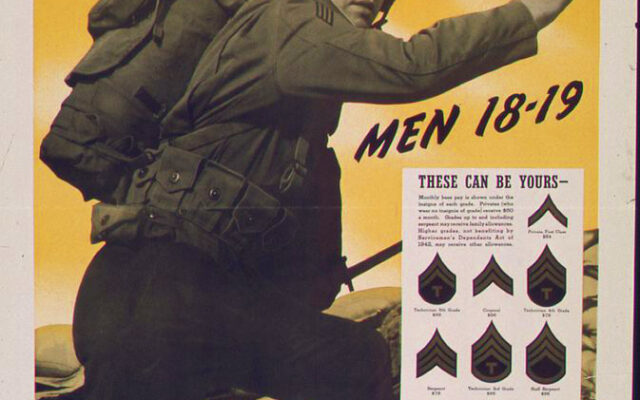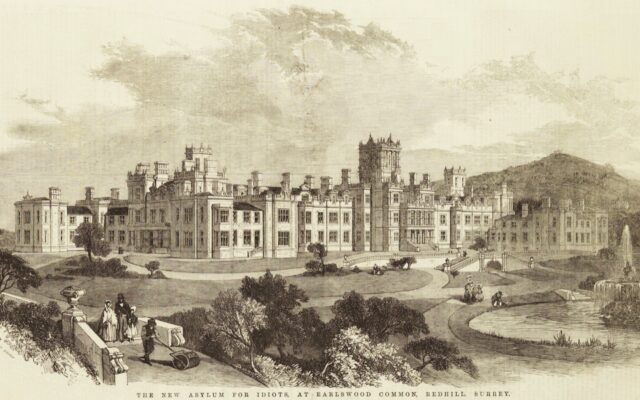On 2 November 1952, two teenage boys were seen climbing onto the roof of Barlow and Parker’s confectionary warehouse in Croydon. The younger of the two, 16-year-old Christopher Craig, habitually carried a gun and did so that night. He used it to fire at the arresting officers, wounding one and killing another, PC Sidney Miles.
The other teenager was 19-year-old Derek Bentley. While Craig had fired the fatal shot, both youths faced a charge of murder over the death of PC Miles, although only Bentley was old enough to be hanged.
Under the principle of joint enterprise, it was argued that Craig and Bentley had been unified in their intention to not only break into the warehouse but also resist arrest by force, evinced by the fact that they were both armed.
Although only Craig had a gun, Bentley had a knuckleduster and a small knife. It therefore did not matter that Craig had shot PC Miles, as Bentley was considered guilty by association.
Moreover, three police officers stated that Bentley knew Craig was armed and had shouted, ‘Let him have it, Chris,’ inciting him to open fire.
Debates centred over whether Bentley meant this as an instruction for Craig or as a plea for him to hand over his weapon, but it is probable that it was not said at all.
Bentley always denied saying it and Craig denied hearing it, as did another officer whose evidence was not considered.
Nevertheless, in a two-day trial in December 1952, the official version of events was accepted without murmur, both defendants were found guilty – Bentley with a recommendation for mercy – and Lord Chief Justice Goddard sentenced Bentley to death.
Derek Bentley’s grave “they fought to the end’ reads a neighbouring stone in the family plot

A ‘soft’ boy
Derek Bentley was born in 1933 in London. His sister Iris described him as a ‘soft’ boy who was close to his mother and loved animals. He would stop to pet a cat on his way to school and lose all sense of time, then get into trouble for being late, a tendency that would later cost him his job as a road sweeper.
He hated school, which was not helped by his frequent absences due to severe headaches – later thought to be petit mal (absence) seizures – and occasional full-blown epileptic seizures.
His patchy school attendance and epilepsy were coupled with what a hospital doctor’s report in 1949 called a ‘congenital lack of intelligence’. The following year, his IQ was recorded as 66 – ‘borderline feeble-minded’ – his reading age as 4 years and his mental age as 10 years. He was called up and rejected for national service, classed as grade IV or ‘mentally subnormal’.
He left school at 15 unable to read or write. This later led to questions being raised as to how he had understood his police statement, which he had supposedly signed numerous times despite barely being able to spell his own name.
Much of this information was dismissed by JCM Matheson, the principal medical officer at Brixton Prison. Matheson decided that Bentley’s Òlow intelligence’ was not enough to certify him as ‘feeble minded’, believing it to be due simply to a lack of education, exacerbated by parental overindulgence and an absence of discipline. He was therefore fit to stand trial.
At the trial, Bentley made a poor witness. His denial of evident truths discredited his entire performance, leading Craig’s barrister John Parris to comment that ‘not only was Bentley a moron but he was a lying moron’.
Iris Bentley thought this was an extension of her brother’s tendency to ‘just pretend things hadn’t happened’, when he knew he was in trouble. She believed he simply did not understand what was taking place in court, but added that neither did the rest of the family, saying it was ‘like playing a game where you didn’t know the rules’. In this game, the stakes were high.
Many of the reports into Bentley’s mental capacity were made widely available only years after his execution, but one person who had access to them at the time was home secretary David Maxwell-Fyfe.
The night before Bentley’s execution, Parris accompanied a delegation of MPs to beg Maxwell-Fyfe to grant a reprieve. He refused. Turning to go, Maxwell-Fyfe observed that ‘everything you have urged in his favour – his feeble-mindedness, his illiteracy, his epilepsy and so on – merely goes to confirm the conclusion that I had already come to. He is a young man that society can well do without’ (Parris, 1991).
Despite appeals, petitions, public outcry and debates in parliament – Reginald Paget MP QC referred to him as a ‘three-quarter witted boy’ – Derek Bentley was hanged on 28 January 1953.
Bentley was pardoned in 1993 and his murder conviction overturned in 1998. 
Bibliography
Bentley I, Dening P (1995) Let Him Have Justice. London: Sidgwick and Jackson
Medak P, director (1991) Let Him Have It. Film
Parris J (1991) Scapegoat. London: Gerald Duckworth.
Trow MJ (1992) Let Him Have It, Chris. London: Grafton
Yallop DA (1971) To Encourage the Others. London: WH Allen
If you don’t subscribe but would like to support us, every small donation helps us continue our work. No donation too small. You can make this for no charge at Paypal Giving using a debit or credit card. DONATION
If you shop on line, why not join our supporters at easy fundraising. Costs you nothing but every purchase makes a small charitable donation to us. https://www.easyfundraising.org.uk/causes/clinitiatives/




